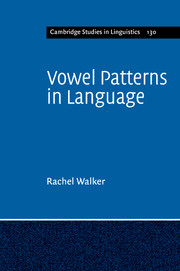Book contents
7 - Direct licensing
Published online by Cambridge University Press: 26 April 2011
Summary
Introduction
This chapter considers the description and analysis of several prominence-based licensing patterns that involve strictly direct licensing. The solution that direct licensing offers to minimize perceptual difficulty for restricted elements is to realize them only in a prominent licensing position and prevent their appearance elsewhere. This is the key respect in which it differs from indirect and identity licensing, where the material subject to licensing is expressed in both the licensing position and a non-licensing position. Many of the patterns under study in this chapter preserve restricted feature specifications when they arise in a prominent licensing context and eliminate them elsewhere. This is what is expected if faithfulness is enforced for the strong position that serves as the licensor. In other patterns, the features in question, or segments that bear those features, migrate to the licensing position. Here it is expected that some other factor can be identified that is responsible for preserving the material subject to licensing.
From a formal standpoint, a common thread that runs through patterns that show solely direct licensing is the containment of feature chains that are subject to licensing entirely within the licensing position, entailing satisfaction of CrispEdge([F], σ). This constraint thus plays an essential role in the majority of analyses in this chapter. The core ranking structure for systems with direct licensing alone is given in (1). The higher stratum contains the licensing constraint, the crisp edge constraint, and the constraint that prohibits feature duplication.
Information
- Type
- Chapter
- Information
- Vowel Patterns in Language , pp. 193 - 237Publisher: Cambridge University PressPrint publication year: 2011
